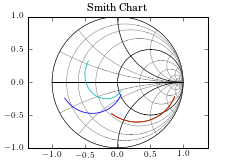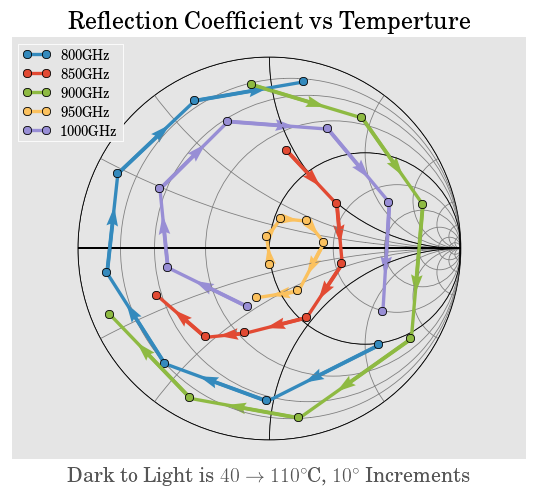Index¶
Description¶
scikit-rf (aka skrf)
is an Open Source, BSD-licensed package for RF/Microwave engineering implemented in the Python programming language. It provides a modern, object-oriented library for network analysis and calibration which is both flexible and scalable. See some of the features below and check out the Documentation for a more in-depth look at scikit-rf.
Getting Started¶
Plot touchstone data on a smith chart, in 3 lines.
import skrf as rf
ntwk = rf.Network('ring slot.s2p')
ntwk.plot_s_smith()
For more information, tutorials, and
examples, see the Documentation

Some Examples¶
Features¶
- Microwave Network Operations:
Read/Write touchstone (.s2p, s?p) files
Arithmetic operations on scattering parameters
Cascade/De-embed 2-port networks
Frequency and port slicing and concatenation.
Connect n-port networks
s/z/y/abcd/t - parameter conversion
- Plotting abilities:
Rectangular Plots (dB, mag, Phase, group delay)
Smith Chart
Automated Uncertainty bounds
- Metrology and Offline Calibration:
One-Port: SOL, Least Squares, SDDL
Two-Port: TRL, Multiline TRL, SOLT, Unknown Thru, 8/16-Term
Partial : Enhanced Response, One-Port Two-Path
- Sets of Networks:
Statistical properties of NetworkSets
Methods to sort and visualize set behavior
- Transmission Line Physics:
Coax, CPW, Freespace, RectangularWaveguide, DistributedCircuit
- GUI support through qtapps
modular, re-useable apps
supports data retrieval, plotting, calibration and more.
- Virtual Instruments (completeness varies by model)
VNAs: PNA, PNAX, ZVA, HP8510, HP8720, NanoVNAs
SA: HP8500
Others: ESP300
Help/Feedback/BUGs¶
For questions about usage, suggestions, or to provide general feedback, please see the GitHub Discussion section or post in the scikit-rf Matrix channel
If you find a problem in scikit-rf, please post an issue to the Issue Tracker





